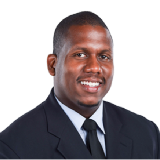Adam Silver vs. one-and-dones is a brewing basketball war
By Ethan Sears
NBA commissioner Adam Silver’s newest priority — once he solves the rest issue, that is — is stopping the ever-expanding flow of one-and-done players from college hoops to the pros.
In an appearance Wednesday on Colin Cowherd’s radio show, “The Herd,” Silver said he’s “rethinking” the NBA’s position on the controversial rule, put in place by his predecessor, David Stern, last decade to stop players from entering into the draft out of high school by increasing the league’s minimum age to 19.
Traditionally, Silver said, the league has advocated for an increase in the minimum age from 19 to 20 with the union lobbying to drop it back to 18. Silver said he and union director Michele Roberts now will “turn back to this age issue” after tabling it during negotiations on the latest Collective Bargaining Agreement.
“What’s happening now, even at the best schools, they enroll in those universities — some great universities — and they attend those universities until either they don’t make the Tournament, and the last game therefore of their freshmen seasons, or they lose or win in the NCAA Tournament, that becomes their last day. So in essence, it’s a half-and-done. Half a school year and they go on,” Silver said.
“I worry about potential stunted development in a player’s most important years [as a result of the current system].”
Ben Simmons, the first overall pick in the 2016 draft, is a classic case of the half-and-done example Silver said he is worried about. After LSU’s 2015-16 season ended in unceremonious fashion, Simmons pulled a disappearing act on his professors for the rest of the school year to devote his time to preparing for the draft. (Simmons proceeded to miss the entire NBA season with the 76ers after breaking a foot on his still-growing body.) Others, such as second-year Nuggets point guard Emmanuel Mudiay, have skipped college altogether, opting to play their would-be one-and-done year as a professional overseas. An odd technicality allowed Thon Maker to become a 19-year-old project lottery pick of the Bucks straight out of high school.
The end result has been, in many cases, an annual class of draftees who still aren’t ready to make immediate, meaningful contributions. Rookies often struggle badly on defense and have major kinks to work out on the offensive end, even when taken at the top of the draft. This hurts the NBA’s bottom line, especially as big-market stalwarts like the Los Angeles Lakers wait for their young players (looking at you, D’Angelo Russell and Brandon Ingram) to develop.
Silver confessed he is unsure what the solution to the one-and-done problem might be. He suggested top college coaches and athletic directors should have a role in shaping a new paradigm in which the players’ goal is to win an NCAA championship as much as it is to up their draft stock. Good luck with that.
By Ethan Sears
NBA commissioner Adam Silver’s newest priority — once he solves the rest issue, that is — is stopping the ever-expanding flow of one-and-done players from college hoops to the pros.
In an appearance Wednesday on Colin Cowherd’s radio show, “The Herd,” Silver said he’s “rethinking” the NBA’s position on the controversial rule, put in place by his predecessor, David Stern, last decade to stop players from entering into the draft out of high school by increasing the league’s minimum age to 19.
Traditionally, Silver said, the league has advocated for an increase in the minimum age from 19 to 20 with the union lobbying to drop it back to 18. Silver said he and union director Michele Roberts now will “turn back to this age issue” after tabling it during negotiations on the latest Collective Bargaining Agreement.
“What’s happening now, even at the best schools, they enroll in those universities — some great universities — and they attend those universities until either they don’t make the Tournament, and the last game therefore of their freshmen seasons, or they lose or win in the NCAA Tournament, that becomes their last day. So in essence, it’s a half-and-done. Half a school year and they go on,” Silver said.
“I worry about potential stunted development in a player’s most important years [as a result of the current system].”
Ben Simmons, the first overall pick in the 2016 draft, is a classic case of the half-and-done example Silver said he is worried about. After LSU’s 2015-16 season ended in unceremonious fashion, Simmons pulled a disappearing act on his professors for the rest of the school year to devote his time to preparing for the draft. (Simmons proceeded to miss the entire NBA season with the 76ers after breaking a foot on his still-growing body.) Others, such as second-year Nuggets point guard Emmanuel Mudiay, have skipped college altogether, opting to play their would-be one-and-done year as a professional overseas. An odd technicality allowed Thon Maker to become a 19-year-old project lottery pick of the Bucks straight out of high school.
The end result has been, in many cases, an annual class of draftees who still aren’t ready to make immediate, meaningful contributions. Rookies often struggle badly on defense and have major kinks to work out on the offensive end, even when taken at the top of the draft. This hurts the NBA’s bottom line, especially as big-market stalwarts like the Los Angeles Lakers wait for their young players (looking at you, D’Angelo Russell and Brandon Ingram) to develop.
Silver confessed he is unsure what the solution to the one-and-done problem might be. He suggested top college coaches and athletic directors should have a role in shaping a new paradigm in which the players’ goal is to win an NCAA championship as much as it is to up their draft stock. Good luck with that.

